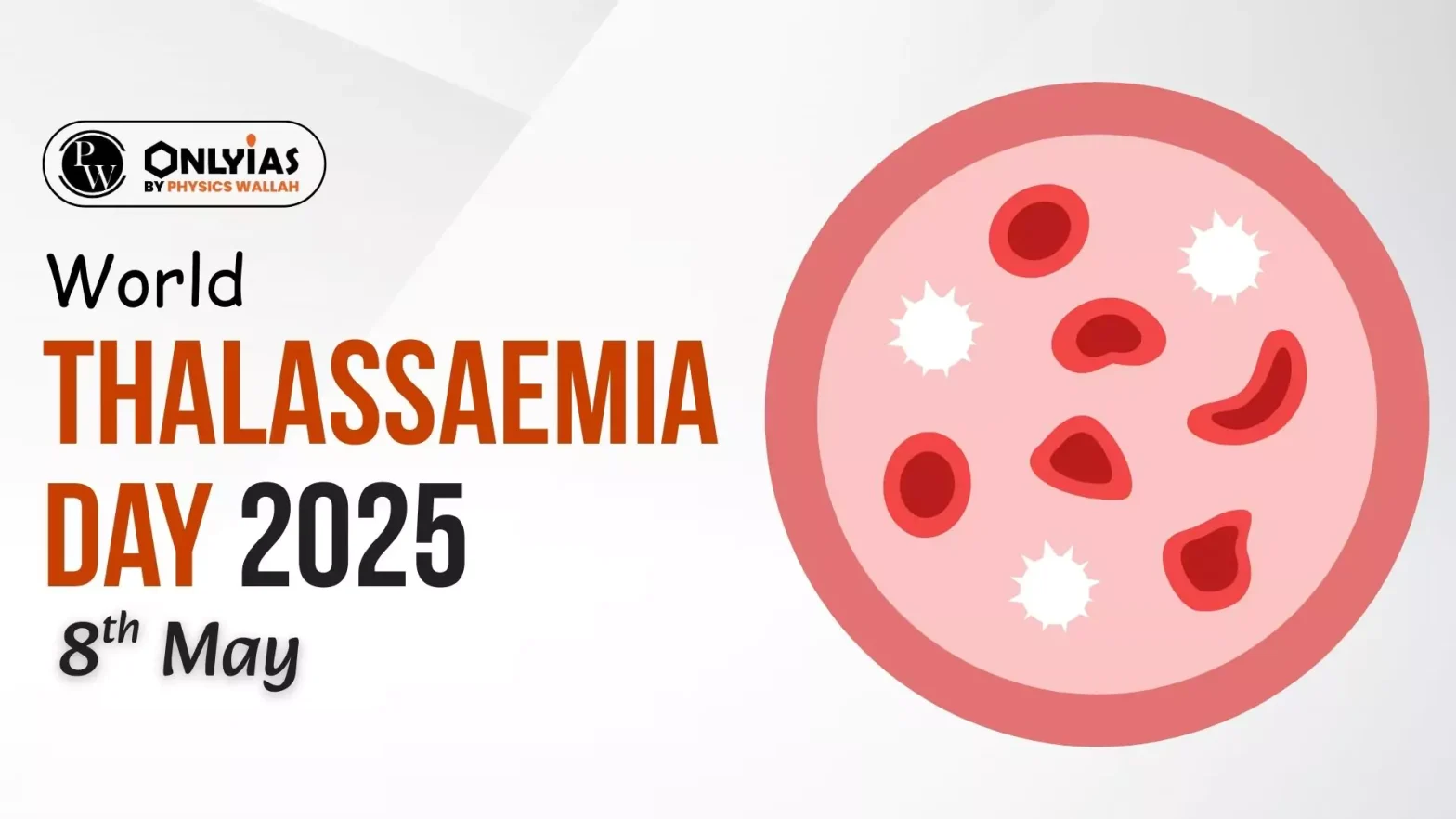World Thalassaemia Day is observed every year to raise awareness about a serious inherited blood disorder called thalassemia.

World Thalassaemia Day 2025 will be observed on May 8, 2025, to promote action and advocacy related to thalassemia prevention, management, and care. The day also honors those living with the disease and acknowledges the dedication of healthcare workers and caregivers who support patients around the world. With millions affected globally, particularly in developing countries like India, this day is crucial for improving knowledge and encouraging blood donation, genetic screening, and public health support.
The day serves as a reminder to governments, medical professionals, and the general public about the importance of early diagnosis and access to treatment.
World Thalassaemia Day was first established in 1994 by the Thalassaemia International Federation (TIF) to commemorate the lives lost to this genetic condition and encourage better care strategies. It is especially relevant for countries with high rates of inherited blood disorders. Below is a quick overview:
Enroll now for UPSC Online Course
| Aspect | Details |
| Event Name | World Thalassaemia Day 2025 |
| Date | May 8, 2025 |
| Established by | Thalassaemia International Federation (TIF) |
| Observed in | Globally, especially in South Asia, Middle East, and the Mediterranean |
| Theme 2025 | To be officially announced (Expected to focus on awareness and prevention) |
| Purpose | Awareness, prevention, honoring patients, encouraging screening |
| First Observed | 1994 |
The World Thalassaemia Day 2025 theme is “Together for Thalassaemia: Uniting Communities, Prioritizing Patients.” This theme emphasizes a collaborative and patient-centered approach to tackling thalassemia globally. With campaign slogans like #WeAre1 and #PatientsFirst, the message focuses on integrating patient voices into healthcare decisions and creating systems that prioritize their needs. It highlights the importance of unity among families, healthcare providers, policymakers, and support groups in ensuring better care and inclusion for those living with the disorder.
The day plays a vital role in bringing attention to thalassemia, a disease that is often misunderstood or overlooked. It encourages people to get tested if there is a family history and to spread awareness about carrier screening. Here is the significance of World Thalassaemia Day:
World Thalassaemia Day was established by Thalassaemia International Federation (TIF) in 1994, in memory of George Englezos, the son of TIF founder Panos Englezos. George lost his life to thalassemia, and this global observance was created to remember such individuals and ensure their struggle brings positive change.
Since then, the day has been marked every year with educational campaigns, blood donation drives, conferences, and policy talks across different countries. Over the years, it has grown into a major public health event, especially in regions where thalassemia is more common due to genetic prevalence.
Thalassemia is a genetic blood disorder that affects the body’s ability to produce hemoglobin, the protein in red blood cells responsible for carrying oxygen. It is inherited when both parents pass on the faulty gene. There are different types of thalassemia, including alpha and beta thalassemia, with varying degrees of severity.
Patients with major thalassemia require regular blood transfusions throughout their lives to survive. Without treatment, thalassemia can lead to severe anemia, organ failure, and other complications. Management also involves iron chelation therapy to remove excess iron from the body, which accumulates due to frequent transfusions.
The symptoms of thalassemia vary based on its severity:
Mild cases may go unnoticed for years, while severe forms require lifelong treatment. Early screening and genetic counseling are key to preventing serious cases in future generations.
Thalassemia is caused by mutations in the DNA of cells that make hemoglobin. These mutations are inherited from parents, meaning both mother and father must carry the defective gene for the child to develop thalassemia major. If only one parent passes on the gene, the child becomes a thalassemia carrier, usually without symptoms.
The condition is more prevalent in populations from South Asia, the Mediterranean, Middle East, and parts of Africa. This makes public awareness and prenatal screening critical in countries like India, where thalassemia is a growing health concern.
Ready to boost your UPSC 2025 preparation? Join PW’s UPSC online courses today!
The theme for World Thalassaemia Day 2025 is yet to be officially announced, but it is expected to focus on prevention, awareness, and access to care.
The day commemorates the memory of George Englezos, who passed away from thalassemia. It was established by the Thalassaemia International Federation in 1994.
Thalassemia is caused by inherited genetic mutations affecting hemoglobin production. It is passed from parents to children.
Symptoms include fatigue, anemia, slow growth, pale skin, and in severe cases, bone deformities and organ swelling.
Yes, India has one of the highest numbers of thalassemia carriers and patients. Awareness, genetic screening, and blood donation are essential to control its spread.
<div class="new-fform">
</div>
